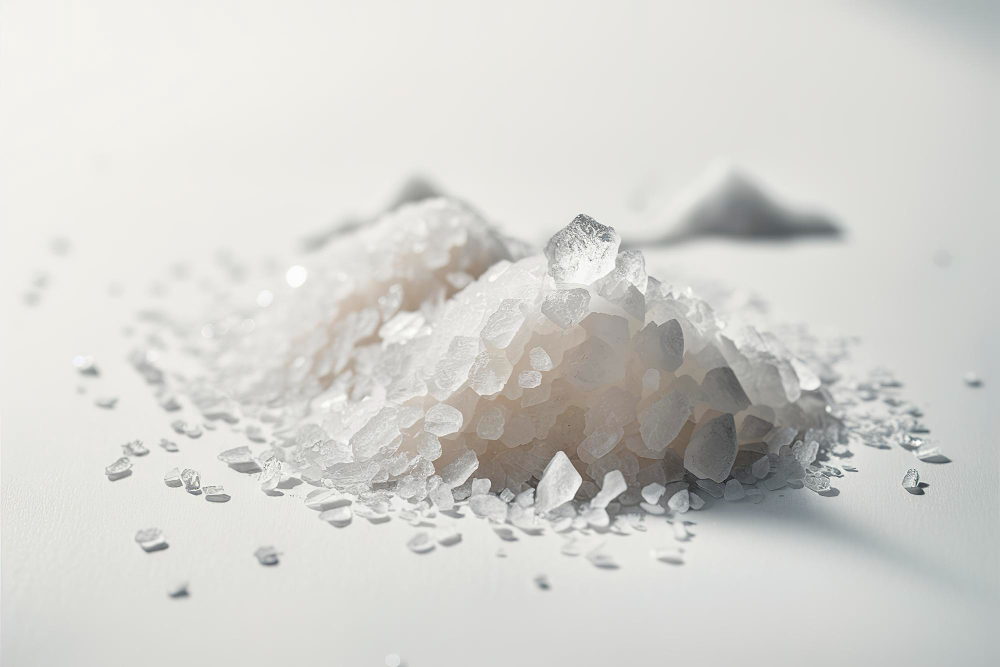
Potassium feldspar is a mineral that’s as fascinating as it is functional. Whether you’re a geology enthusiast, an industry professional, or simply curious about what makes up the Earth beneath your feet, this guide will provide you with all the details about potassium feldspar. Let’s dig in, shall we?
What is Potassium Feldspar?
Potassium feldspar, often abbreviated as K-feldspar, is a group of minerals that form an essential component of igneous, metamorphic, and sedimentary rocks. This mineral is primarily composed of aluminum silicate with potassium.
Chemical Composition of Potassium Feldspar
- Formula: KAlSi₃O₈
- Key Elements: Potassium (K), Aluminum (Al), Silicon (Si), and Oxygen (O)
Its distinct chemical structure makes it one of the most versatile and widely used minerals on Earth.
Types of Potassium Feldspar
Potassium feldspar isn’t just one mineral; it’s a family. Let’s break it down:
1. Orthoclase
- Characteristics: Known for its monoclinic crystal structure, orthoclase has a pearly luster and is usually pink, white, or yellow.
- Uses: Widely used in ceramics and glass production.
2. Microcline
- Characteristics: Exhibits a triclinic crystal structure and can appear in shades of green, pink, or white.
- Fun Fact: Amazonite, a green variety of microcline, is prized as a gemstone.
3. Sanidine
- Characteristics: Found in volcanic rocks, sanidine has a glassy appearance and is usually colorless or pale.
- Specialty: Its rapid cooling process forms a high-temperature feldspar.
Physical Properties of Potassium Feldspar
Understanding its physical traits can help us identify it in nature:
- Hardness: Ranges between 6 and 6.5 on the Mohs scale, making it quite durable.
- Cleavage: Exhibits perfect cleavage in two directions.
- Luster: Typically vitreous or glassy.
- Density: Around 2.55-2.63 g/cm³.
- Color: Commonly pink, white, green, or gray.
Where is Potassium Feldspar Found?
Potassium feldspar is found worldwide. Major deposits include:
- United States: Colorado, North Carolina.
- India: Rajasthan, Tamil Nadu.
- Brazil: Minas Gerais region.
- Europe: Germany, Norway, and Italy.
These global locations highlight its abundance and accessibility.
Formation and Geological Significance
Potassium feldspar forms in both intrusive and extrusive igneous rocks. It crystallizes from magma at various temperatures and pressures, showcasing its adaptability. The mineral is also a vital component of granite, one of Earth’s most common rocks.
Industrial Applications of Potassium Feldspar
Potassium feldspar’s unique properties make it a go-to mineral across industries:
1. Ceramics and Glass Manufacturing
- Acts as a flux to reduce the melting temperature of quartz and clays.
- Enhances the strength and durability of ceramic products.
2. Paint and Coatings
- Used as a filler to improve weather resistance and durability.
3. Agriculture
- A source of potassium in fertilizers, essential for plant growth.
4. Abrasives
- Ground into a fine powder for use in polishing and grinding applications.
5. Gemstones
- Varieties like amazonite are used in jewelry.
Potassium Feldspar in Daily Life
Believe it or not, potassium feldspar is part of your everyday life. Here’s how:
- The glossy finish on ceramic tiles? That’s feldspar.
- The sparkling sheen in glassware? Feldspar again.
- Even the food you eat benefits from potassium-rich fertilizers derived from feldspar.
Environmental Impact and Sustainability
Mining potassium feldspar does have environmental implications. However, many companies are adopting sustainable practices such as:
- Reducing waste.
- Recycling water in mining processes.
- Restoring landscapes post-mining.
Tips for Identifying Potassium Feldspar in the Field
Want to try identifying it yourself? Here’s how:
- Look for Cleavage: Potassium feldspar’s two directions of perfect cleavage are a giveaway.
- Check the Color: Pinkish hues often indicate orthoclase or microcline.
- Perform a Scratch Test: Its hardness should scratch glass but not quartz.
Potassium Feldspar vs. Other Feldspars
Here’s how potassium feldspar differs from its cousins:
- Sodium Feldspar (Plagioclase): Typically white or gray, with striations on the surface.
- Calcium Feldspar: Found in igneous rocks, often with a darker color.
Fun Facts About Potassium Feldspar
- It’s named after the German word “feld” (field) and “spath” (a rock that doesn’t contain ore).
- Ancient Egyptians used feldspar to carve artifacts.
- It’s one of the most abundant minerals in Earth’s crust.
Common Misconceptions
- Potassium feldspar isn’t rare: It’s actually one of the most common minerals.
- It’s not the same as quartz: Though often found together, they are distinct minerals.
Conclusion
Potassium feldspar is a remarkable mineral with an impressive range of applications, from industrial uses to everyday products. Its durability, abundance, and versatility make it invaluable. Whether you encounter it in the wild or in your kitchen, this mineral is worth appreciating.
FAQs
1. What is potassium feldspar used for?
Potassium feldspar is used in ceramics, glass manufacturing, fertilizers, and as an abrasive material.
2. How can I identify potassium feldspar?
Look for its pinkish color, perfect cleavage, and hardness that can scratch glass.
3. Is potassium feldspar rare?
No, it’s one of the most common minerals on Earth.
4. Can potassium feldspar be used as a gemstone?
Yes, varieties like amazonite are used in jewelry.
5. Where is potassium feldspar commonly found?
It’s found worldwide, with significant deposits in the USA, India, Brazil, and Europe.